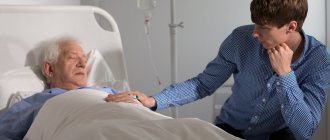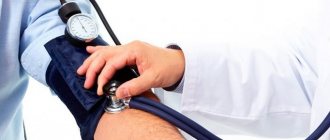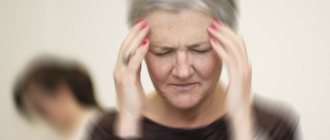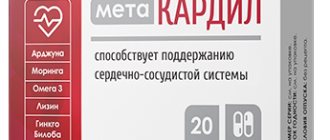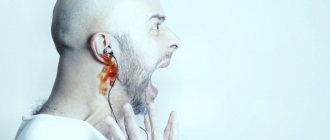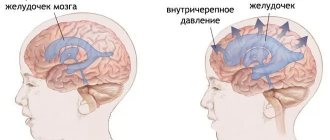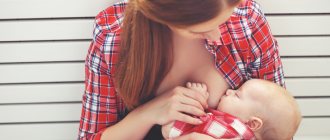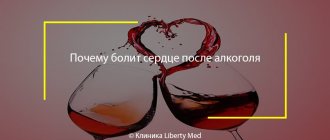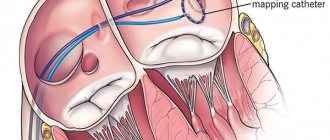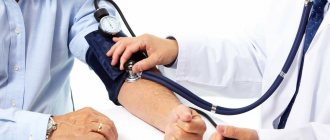Rehabilitation after an ischemic stroke is a set of medical, psychological, social and pedagogical measures aimed at restoring lost functions and returning the patient to a normal lifestyle.
The effectiveness and quality of patient rehabilitation after an ischemic stroke depends on several main factors:
- Active participation in the recovery process, both of the patient and his loved ones;
- The complexity of rehabilitation measures - i.e. comprehensive restoration of functions impaired as a result of a stroke;
- Early start of rehabilitation measures;
- Systematicity and continuity of rehabilitation measures at various stages of the recovery period.
Important aspects of the rehabilitation program for patients who have suffered a stroke are the prevention of complications in the post-stroke period and the prevention of the development of recurrent strokes.
Step-by-step rehabilitation after ischemic stroke
The timing of the start of rehabilitation of patients after ischemic stroke depends on the severity of the cerebrovascular accident. But the fundamental principle is the same - the earlier rehabilitation measures are started, the greater the chances that it will be possible to minimize the risk of developing neurological deficits in the future. For patients in this group, the approach to the rehabilitation process is always individual. For some patients, rehabilitation measures are recommended to begin 24-48 hours after a stroke; for other patients, rehabilitation begins later - after 5-7 days.
An integrated approach to the problem of rehabilitation of patients who have suffered a stroke is the key to the success of the entire complex of treatment measures. The recovery program for stroke patients must take into account many aspects, in particular:
- diet,
- motor, speech and drug rehabilitation,
- social and psychological readaptation.
The process of rehabilitation of a patient after an ischemic stroke requires, in addition to enormous work on the part of the patient himself and his relatives, the efforts of a number of specialists.
These include: neurologists, rehabilitation specialists, physical therapy methodologists, speech therapists-aphasiologists, physiotherapists and psychotherapists.
Features of providing assistance on the street
If a stroke occurs on the street, first aid has the following features:
- Involve several people to help. Organize the actions of each of them, clearly distributing responsibilities (someone calls an ambulance, and someone assesses the general condition, etc.).
- Having placed the patient in the desired position, free the neck and chest to make it easier for him to breathe (remove the tie, unfasten the buttons, loosen the belt).
- Wrap up the limbs, cover the person with warm clothes (in cold weather), massage and rub them.
- If you have a mobile phone or contacts with relatives, inform them about what happened.
Diet of a patient who has suffered an ischemic stroke
Since the leading cause of ischemic stroke is atherosclerosis, which affects the vessels responsible for the blood supply to the brain, the diet after a stroke should help prevent further progression of atherosclerosis.
- Strong meat broths, high-fat dairy products.
- It is necessary to reduce the consumption of cholesterol, which is found in large quantities in butter and animal fats.
- It is recommended to exclude fatty meats (primarily pork) from the diet.
- Reduce salt intake to 3-5 grams per day.
The basis of the diet of a person who has suffered a stroke should be foods containing large amounts of fiber and complex hydrocarbons. First of all, these are fresh fruits and vegetables.
Regular consumption of foods containing polyunsaturated fatty acids can reduce blood cholesterol levels and, accordingly, reduce the risk of developing a recurrent stroke:
- Liquid vegetable oil,
- Seafood,
- Fish.
Recommended to eat:
- Boiled and baked lean meats,
- Low-fat dairy products,
- Wholemeal bread,
- Bread with bran.
In the first days after a stroke, boiled food is better absorbed. Preferably in pureed form.
Motor rehabilitation
Passive gymnastics. Motor rehabilitation of patients who have suffered a stroke is an integral and one of the most important components of the recovery process. The basic method of motor rehabilitation is physical therapy, which begins as soon as the patient’s condition allows. The objectives of physical therapy include restoration (full or partial) of range of motion, strength and dexterity in the affected limbs, balance function, and self-care skills.
In the early period, immediately after a cerebrovascular accident occurs, passive gymnastics is performed. It allows not only to normalize the tone of the limbs, but also to prevent the formation of bedsores. Passive gymnastics is performed by exercise therapy specialists together with the patient’s relatives.
When performing gymnastics, passive movements of paretic limbs are performed at a slow pace, carefully, slowly, while trying not to cause pain or increase muscle tone. Such gymnastics is first performed on the healthy side and then on the sore side. It is important to start proximally, in isolation at each joint. In this case, 8–10 movements are performed in each joint.
Active gymnastics. The next stage of recovery is the beginning of active gymnastics, which begins with simple movements of the limbs and becomes more complex as the patient becomes more active. The patient is taught to sit up in bed, maintain balance and stand up, then walk, first accompanied or with support, and then independently.
Great importance is given to motor rehabilitation in the affected upper limb, in particular the restoration of fine motor skills, which is the key to full social and everyday readaptation. The patient learns simple self-care skills, in particular eating, personal hygiene, using the toilet and bathroom, as well as dressing independently, in stages.
The duration of the various stages of motor recovery depends, first of all, on the extent of the area of brain damage. An important part of rehabilitation, both motor and psychological, is the early involvement of patients in household work and the preparation of able-bodied patients to go to work.
Massotherapy
Along with physical therapy, positioning of the lying patient and therapeutic massage are important for the recovery of the patient. The purpose of these therapeutic measures is to prevent the development of muscle contractures and maintain normal joint function, prevent bedsores and pulmonary complications, primarily congestive (hypostatic) pneumonia. When conducting massage sessions, certain principles must be observed:
- the extensor muscles are usually massaged on the arm,
- on the leg - the flexor muscles of the leg and the dorsum of the foot.
Massage is carried out throughout the entire recovery period.
Physiotherapeutic procedures, acupuncture, acupressure, cryotherapy, and water procedures are widely used as additional methods that speed up the rehabilitation process.
Restoring everyday skills
All everyday skills should be developed under the supervision of a loved one, an assistant who will control the patient’s movements and, if necessary, support and guide his hand.
Nutrition
To prevent spoons and forks from slipping out of the patient’s hand, you can wrap their handles with thin foam rubber. If paralysis/paresis affects the leading hand, then when eating, you should help the patient - support and guide his hand towards the mouth.
Using the tap and washing your face
A chair should be placed in front of the sink so that the patient can wash while sitting. He should open the tap with the affected hand and, if necessary, should be assisted by guiding his hand towards the tap. In this case, the patient should check the temperature of the water with a healthy hand with preserved sensitivity. Once a comfortable temperature has been established, the patient should attempt to wash the affected hand.
Combing
You should choose combs made from non-slip materials, or wrap the comb handle with thin foam rubber. If possible, you should try to comb your hair with the hand with impaired function.
Dressing
Clothes (jacket, shirt) should be loose, fastened with buttons. It is placed on the knees, between which the sleeve for the affected arm is lightly fixed. With the help of the healthy one, she gradually moves into the sleeve.
Speech rehabilitation
Speech disorders after a stroke are observed in more than a third of patients who have suffered acute cerebrovascular accident. It is necessary to understand that the concept of “speech impairment” implies not only a violation of one’s own voluntary speech (motor aphasia), but also a violation of the understanding of the speech of others (sensory aphasia), forgetting of individual objects and actions (amnestic aphasia), and there are also combined manifestations of these conditions. Another common type of speech impairment after a stroke is dysarthria - a violation of the correct articulation of sounds while maintaining “inner speech”, understanding the speech of others, reading and writing.
The main factor for success in restoring speech functions is systematic long-term classes on the development of speech, reading and writing, which are conducted by a speech therapist-aphasiologist or under his direct supervision.
It is necessary to begin speech restoration classes in the acute period of a stroke, as soon as the level of consciousness allows. At this stage, classes are short - no more than 15-20 minutes. Subsequently, the duration increases to 30-45 minutes or more. In such a situation, speech isolation of the patient is very dangerous. Relatives and friends of the patient must understand that not only special classes, but also ordinary constant everyday speech contact with the patient and reading books in themselves contribute to the restoration of both his own speech and understanding of the speech of others. Consequently, the timing of the patient’s return to normal life after a stroke depends on the atmosphere created by the loved ones around him.
Memory training
Memory and intellectual function training occurs simultaneously with speech restoration. The patient should try to repeat the syllables, words, phrases spoken by the assistant, gradually increasing the interval between pronouncing the word and repetition.
Board games, composing stories based on pictures, solving crossword puzzles, and even simple conversations help restore thinking abilities. Near each item in the room you can put a card with its name. As cognitive functions are restored, the patient can read, watch films, and discuss their content.
Drug rehabilitation
Drug therapy in patients after a stroke is aimed at restoring the functions of the affected areas of the brain that were “inhibited” as a result of the cerebral catastrophe, improving cerebral blood flow, as well as preventing the development of postoperative complications.
Drug rehabilitation includes a range of metabolic drugs and biogenic stimulants. This group includes the following drugs:
- amino acids,
- adenosine triphosphate,
- B vitamins, etc.n
- nootropic drugs,
- Essentiale.
Biogenic stimulants include:
- ginseng tincture,
- aloe extract, etc.
Anticholinesterase drugs are prescribed according to indications, which include:
- oxazyl,
- prozerin,
- improving neuromuscular conduction.
If muscle spasticity is detected, muscle relaxants are used, such as:
- baclofen,
- isopropane,
- mydocalm.
In cases of increased plastic tone, cyclodol and other drugs are prescribed.
In the absence of contraindications, all patients who have suffered an ischemic stroke receive drugs that improve the rheological properties of the blood, in particular, aspirin and new generation antiplatelet agents (Plavix, Tiklid, etc.). Therapy is prescribed and carried out only under the supervision of a specialist.
Prevention of recurrent stroke
The main goal of preventing recurrent disruption of cerebral blood flow is to reduce the risk of developing this disease by eliminating the factors leading to the development of stroke. The main risk factors include:
- Arterial hypertension,
- Hyperlipidemia,
- Smoking,
- Some heart diseases with heart rhythm disturbances (atrial fibrillation) and/or valve damage,
- Insufficient physical activity
- Obesity,
- Diabetes.
Repeated strokes in the overwhelming majority develop according to the same mechanism as the first ones, so it is necessary to determine the possible genesis of the first stroke. For all types of ischemic stroke, long-term (almost lifelong) use of antiplatelet drugs is recommended. For ischemic strokes that develop as a result of cardioembolism, along with antiplatelet agents, the use of anticoagulants (phenylin) under the control of blood prothrombin is indicated.
All patients who have suffered a cerebrovascular accident of the ischemic type must necessarily consult a vascular surgeon with an ultrasound examination of the main arteries supplying the brain. Since one of the main causes of ischemic stroke is atherosclerotic damage to the carotid arteries. When their pathology is identified and there are indications, the issue of surgical intervention or stenting is decided.
